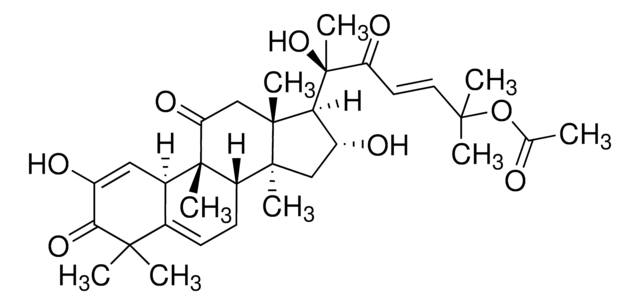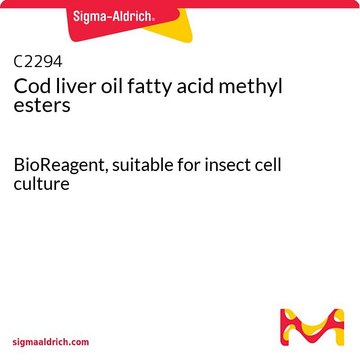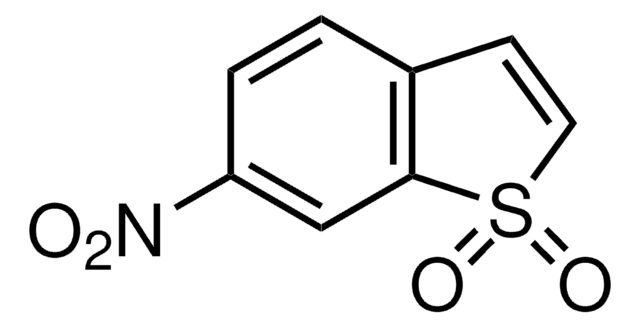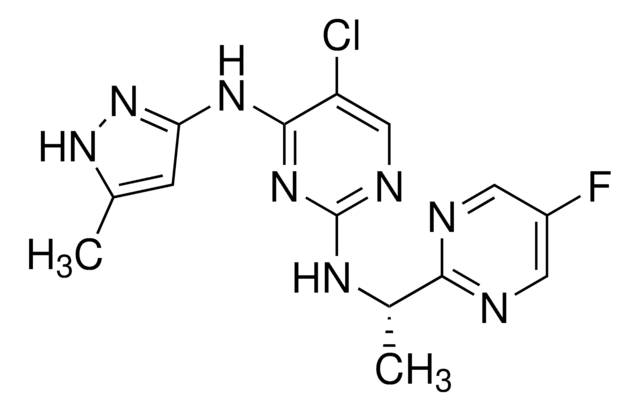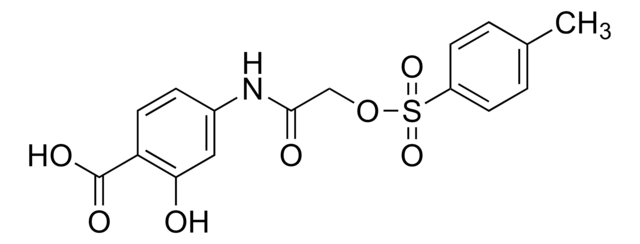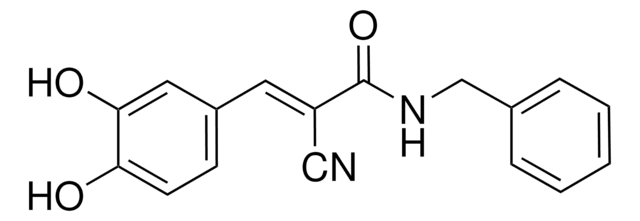Key Documents
C4493
Cucurbitacin I hydrate
≥95% (HPLC), solid
Synonim(y):
2,16α,20,25-Tetrahydroxy-9-methyl-19-Nor-9β,10α-lanosta-1,5,23-triene-3,11,22-trione, Elatericin B, JSI-124, NSC 521777
About This Item
Polecane produkty
Próba
≥95% (HPLC)
Postać
solid
kolor
white to off-white
rozpuszczalność
DMSO: >5 mg/mL
temp. przechowywania
−20°C
ciąg SMILES
O.CC(C)(O)\C=C\C(=O)[C@](C)(O)[C@H]1[C@H](O)C[C@@]2(C)[C@@H]3CC=C4[C@@H](C=C(O)C(=O)C4(C)C)[C@]3(C)C(=O)C[C@]12C
InChI
1S/C30H42O7.H2O/c1-25(2,36)12-11-21(33)30(8,37)23-19(32)14-27(5)20-10-9-16-17(13-18(31)24(35)26(16,3)4)29(20,7)22(34)15-28(23,27)6;/h9,11-13,17,19-20,23,31-32,36-37H,10,14-15H2,1-8H3;1H2/b12-11+;/t17-,19-,20+,23+,27+,28-,29+,30+;/m1./s1
Klucz InChI
ZKDSPEWKSJCXQE-NEBRQAMTSA-N
Działania biochem./fizjol.
Cechy i korzyści
Hasło ostrzegawcze
Danger
Zwroty wskazujące rodzaj zagrożenia
Zwroty wskazujące środki ostrożności
Klasyfikacja zagrożeń
Acute Tox. 1 Oral
Kod klasy składowania
6.1A - Combustible acute toxic Cat. 1 and 2 / very toxic hazardous materials
Klasa zagrożenia wodnego (WGK)
WGK 3
Temperatura zapłonu (°F)
Not applicable
Temperatura zapłonu (°C)
Not applicable
Środki ochrony indywidualnej
Eyeshields, Faceshields, Gloves, type P3 (EN 143) respirator cartridges
Certyfikaty analizy (CoA)
Poszukaj Certyfikaty analizy (CoA), wpisując numer partii/serii produktów. Numery serii i partii można znaleźć na etykiecie produktu po słowach „seria” lub „partia”.
Masz już ten produkt?
Dokumenty związane z niedawno zakupionymi produktami zostały zamieszczone w Bibliotece dokumentów.
Klienci oglądali również te produkty
Produkty
Sigma-Aldrich offers many products related to JAKs for your research needs.
Nasz zespół naukowców ma doświadczenie we wszystkich obszarach badań, w tym w naukach przyrodniczych, materiałoznawstwie, syntezie chemicznej, chromatografii, analityce i wielu innych dziedzinach.
Skontaktuj się z zespołem ds. pomocy technicznej

